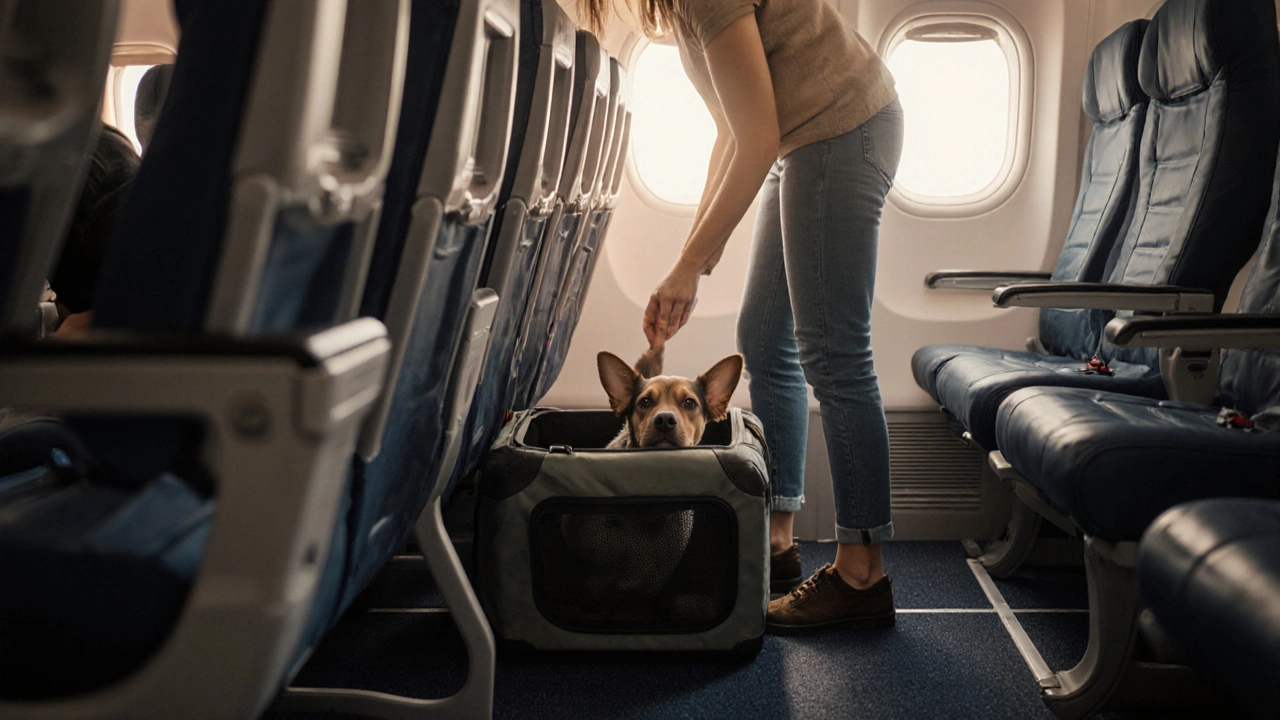30 Pound Dog Airline Seat: Buying, Rules, and Travel Hacks
When talking about a 30 pound dog airline seat, a dedicated cabin seat that lets a dog up to 30 lb sit beside its owner on a flight. Also known as dog seat purchase, it offers a safer, calmer alternative to the cargo hold. 30 pound dog airline seat is gaining popularity as more owners look for ways to keep their pets close while flying.
First up, know the airline pet policies, the set of rules airlines enforce for animals traveling in the cabin. Most UK carriers cap cabin pets at 15 lb, but a few, like JetBlue and Alaska, allow dogs up to 30 lb if you buy a seat. These policies also dictate carrier size, required health certificates, and extra fees. Understanding them early saves you from surprise costs at the airport.
If you can’t meet the cabin weight limit, you’ll hear about a dog cargo flight, the practice of shipping a dog in the aircraft’s cargo hold. While it’s a viable option for larger breeds, cargo can be stressful: temperature swings, loud noises, and limited supervision. Many vets recommend it only when the dog is healthy, used to crates, and the flight is short. Knowing the differences helps you choose the least traumatic route.
Before you even book, create a dog travel checklist, a detailed list of documents, supplies, and steps needed for a smooth flight. Typical items include a recent vet health certificate, an airline‑approved carrier, a copy of the booking confirmation that shows the pet seat, and a prepaid pet fee receipt. Add a quick pre‑flight vet visit to confirm up‑to‑date vaccinations and to discuss any calming aids the vet recommends.
Long flights bring another challenge: a place for your pup to relieve itself. The dog toilet on long flights, strategies and accessories for managing a dog’s bathroom needs during extended air travel often involve absorbent pads, a collapsible pet mat, and a gentle “potty break” before boarding. Some airlines allow a short walk on the runway during layovers, so plan accordingly and pack a spare set of wipes.
Booking the seat itself is straightforward but requires timing. Most airlines only open pet seat reservations 48‑72 hours before the flight, and they limit the number of pet seats per aircraft. Call the airline early, confirm the exact price (usually $100–$150 USD per pet), and ask about any breed restrictions. Have your dog’s microchip number handy, as many carriers log it for safety.
Once the seat is secured, think about comfort. A snug carrier with a breathable mesh top keeps your dog calm. Add a familiar blanket or a chew toy to reduce anxiety. Some owners train their dog to sit in the carrier at home for short periods; this habituation makes the cabin experience smoother. Keep a water bottle on hand and offer small sips during the flight to prevent dehydration.
All these pieces—policies, cargo alternatives, checklists, in‑flight bathroom solutions, and comfort tips—form a complete picture of how to travel with a medium‑sized dog. Below you’ll find a curated set of articles that dive deeper into each area, from airline‑specific rules to step‑by‑step guides for stress‑free pet travel. Get ready to explore the full range of advice and make your next flight a breeze for both you and your furry co‑pilot.
Posted By Bryndle Redding On 20 Oct 2025 Comments (0)
Will a 30‑lb Dog Fit Under an Airline Seat? Size Guide & Travel Tips
Find out if a 30‑lb dog can fit under an airline seat, learn carrier size limits, airline policies, and practical tips for stress‑free cabin travel.
READ MORE